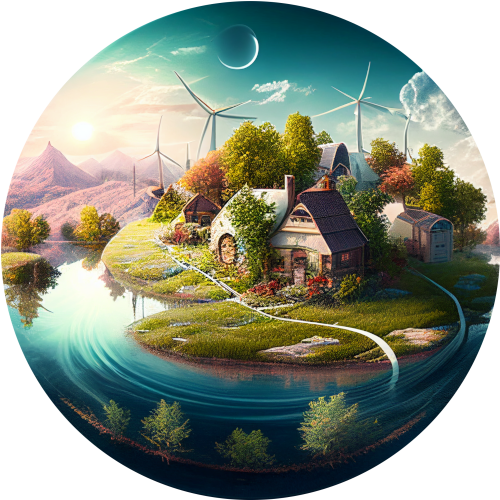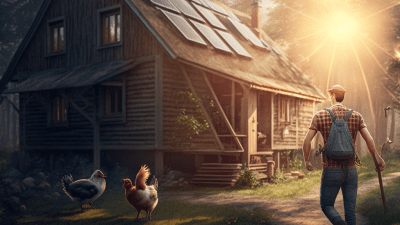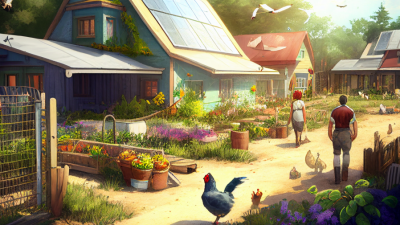As we face the increasing threat of climate change, it’s important that we all take action to reduce our carbon footprint. Every little bit counts, and making small changes in our daily lives can have a big impact on the environment. The good news is that reducing your carbon footprint can be easy and can even improve your quality of life.
I want to share some tips and tricks that I have learned and used in my own life to reduce my carbon footprint and live a more sustainable lifestyle. From reducing energy usage at home to choosing sustainable products, these are simple and effective ways to make a positive impact on the environment. So whether you’re a seasoned environmentalist or just starting on your sustainability journey, I hope this blog post will inspire you to take action and make a difference.
Tip number one : Reduce Energy Usage at Home
One of the easiest ways if not the easiest to reduce your carbon footprint is to reduce the amount of energy you use at home. This can be done by turning off lights when you leave a room, using energy-efficient light bulbs and unplugging electronics when they are not in use. Lowering the heating or air conditioner a few degree and installing a programmable thermostat to help regulate the temperature can be a great way to reduce energy usage. You should also use a clothesline or drying rack to air-dry clothes instead of using a clothes dryer which take massive amount of electricity. I have found that using smart power strips, which can be set to turn off multiple devices at once, has been a huge help in reducing my energy usage.
Reduce Water Usage
Another way to reduce your carbon footprint is to reduce the amount of water you use. This can be done by fixing leaks, taking shorter showers, using low-flow toilets and showerheads. You can also take the habit to close the water in-between usage when doing the dishes or washing things and also keep the water flow lower. I have also found that using a rain barrel to collect rainwater for watering plants, washing cars and clean is a great way to reduce water usage. If you’re far from the city like me and have your own water well, your carbon footprint regarding water is already a lot lower than city water users.
Use Public Transportation or Carpool
I know my city readers wont like this one but cars are in the top problematic co2 generator. So whenever possible, use public transportation, walk, or bike instead of driving. This not only reduces your carbon footprint but also saves money on gas and vehicle maintenance. If you need to drive, consider carpooling with friends or coworkers. I myself used a bike and public transportation until my 30’s because I moved out of the city and the stores are now 10 – 15 minutes drive from my home. If your in the same situation as me try to reduce your trips to the minimum and do all your shopping and groceries at the same time to avoid going back and forth.
Buy Local and Support Sustainable Agriculture
When you buy products that are grown or produced locally, you are reducing the distance that these products need to travel, which means a lot fewer emissions from transportation from around the globe. Additionally, local farmers and producers are more likely to use sustainable practices, which helps to protect the environment. Buying local also ensures that the products you purchase are fresher and of higher quality than those that have traveled long distances. By buying local, you are making a positive impact on the environment and supporting your community at the same time. It also helps to support local businesses and the local economy. When you buy local, you are supporting the livelihoods of your neighbors and friends and keeping money in your community. This, in turn, can help create jobs and provide a stable local economy.
Reduce Waste
Reducing waste is an important step towards a more sustainable lifestyle. One effective way to reduce waste is to buy in bulk with reusable containers. By purchasing larger quantities of items like grains, nuts, pasta, dried fruits, cereal and spices, you can reduce the amount of packaging waste that ends up in landfills. Reducing the need for single-use packaging is important and this not only helps to reduce waste, but it can also save you money in the long run. Another way to reduce waste is to adopt a “zero waste” mentality and make conscious choices about the products you buy. This can mean choosing products with minimal packaging or opting for reusable products like cloth napkins or stainless steel water bottles instead of disposable options. Additionally, composting food waste and recyclable materials can help to reduce the amount of waste that ends up in landfills. By making small changes in your daily life, you can make a big impact on the environment and reduce waste.
Choose Sustainable Products
This one can be a bit tricky as it is time consuming to get the information needed to make the right choice. When making purchases, choose products that are made from sustainable materials and are environmentally friendly. Look for products that are made from recycled materials, biodegradable, or have minimal packaging. Additionally, choose products that are made by companies with environmentally-friendly policies. We will be posting more and more articles about really sustainable products so you will be able to refer to this blog in order to make the good decision.
Use Renewable Energy Sources
If possible, switch to a renewable energy source for your home. One way to do this is by installing renewable energy systems in your home, such as solar panels, wind turbines, or geothermal systems. These systems allow you to generate your own electricity, reducing your dependence on traditional energy sources. Additionally, using renewable energy can save you money in the long run, as you won’t be paying for energy from the grid but might cost you a bit more in the beginning if you don’t DIY your way into self made electricity. we will talk more about DIY projects you can make to generate your own electricity in the near future.
Finally : Educate Yourself and Spread the Word
Educating yourself about environmental issues and sharing your knowledge with others is a crucial step in creating a more sustainable future. Start by reading books and articles about environmental issues and sustainability, attending events such as eco-friendly festivals or workshops, and following environmental organizations and experts on social media. This will help you stay informed and up-to-date on the latest developments in the field.
Sharing your knowledge with others is just as important as educating yourself. You can do this by discussing environmental issues with your friends and family, volunteering for environmental organizations, or using social media to spread the word. By inspiring others to take action, you can help create a positive impact on the environment and make a difference in your community.
Additionally, spreading awareness about environmental issues can encourage businesses and government leaders to take action and make changes that benefit the environment. Whether it’s through writing letters to your elected representatives, participating in community initiatives, or simply having conversations with those around you, your voice and actions can help create a more sustainable future for everyone. So, educate yourself and use your knowledge and influence to create a positive impact and make a difference in the world.
















